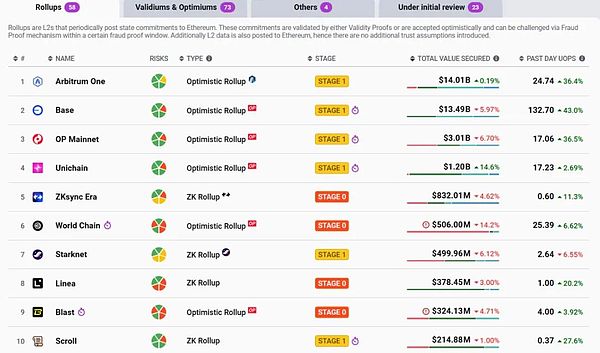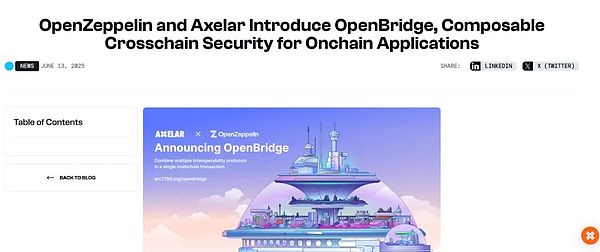The Ethereum ecosystem may soon move from the L2 "Spring and Autumn and Warring States" melee stage to a unified era.
The key lies in the ongoing ERC-7786, which attempts to set a set of universal cross-chain communication "interface specifications" for Ethereum,thereby integrating various message passing standards into a unified API to achieve mutual communication between smart contracts of different blockchain networks within the Ethereum ecosystem.
As early as April 15, joshrudolf.eth, a member of the Ethereum Foundation, publicly emphasized that "cross-chain messaging is one of the key elements to solve the problem of Ethereum's cross-chain user experience."

So what exactly is ERC-7786, what problems does it solve, and why is it important? This article will show you how to understand this new standard that deserves the attention of all Ethereum users.
Ethereum needs a unified cross-chain communication protocol
As we all know, from the initial multi-chain concepts of Cosmos and Polkadot to the prosperity of Rollup in the Ethereum L2 era, especially the great development of application chains such as OP Stack, Arbitrum Nova, and Starknet, liquidity has become increasingly decentralized on Ethereum and L2.
According to incomplete statistics from L2BEAT, there are hundreds of Ethereum L2s in a broad sense, which has led to a long-standing problem - the extreme fragmentation of liquidity.
It should be noted that even though they are all based on the Ethereum ecosystem, different L2s do not communicate with each other. If users want to transfer assets from Arbitrum to Starknet, or perform contract interactions across different L2s, they can only use cross-chain bridges or cross-chain messaging protocols to achieve secure interactions between contracts, users, and assets across multiple networks.

Source: L2BEAT
This not only makes users pay extra friction costs every year due to cross-chain obstacles, but more importantly, the Ethereum ecosystem, especially the synergy between various L2s, has also been severely weakened. Although many protocols currently implement inter-chain communication functions, each protocol has its own interface, calling method and security model. Developers can hardly reuse code or interface logic between different protocols, which directly leads to repeated "reinventing the wheel" and high operation and maintenance costs, and extremely fragmented user experience.
Therefore, ERC-7786 was proposed to break this fragmented and divided ecosystem, and to provide a unified standard interface for all inter-chain communication protocols, so that DApp can communicate securely with any chain through the same "gateway" without being bound to a specific protocol:
The standard was led by OpenZeppelin and supported by multiple cross-chain and modular projects including the Ethereum Foundation and Axelar. As a unified cross-chain messaging interface standard for DApp, it aims to standardize the common interface used by decentralized applications (DApp) to securely send and receive messages across multiple blockchains.

Source: erc7786.org
ERC-7786: Cross-chain communication "unified interface"
If you use one sentence to summarize ERC-7786, it is like the "ERC-20" in the field of cross-chain communication.
Just as ERC-20 provides a standard interface for tokens and ERC-721 defines general specifications for NFTs, ERC-7786 also attempts to establish a unified and universal "communication socket" for cross-chain messaging—You can compare it to the "USB standard" in the Web3 world. As long as it is connected to the standard interface, any protocol can be plug-and-play.
The figure below shows the core components and processes of ERC-7786, demonstrating how to send and receive messages between different blockchains through standardized interfaces. An ERC-7786 message includes four basic elements:
Sender: Identified in CAIP-10 format (such as eip155:1:0xabc...)
Receiver: Also identified by CAIP-10
Payload: Arbitrary execution data (bytes)

Source: erc7786.org
Among them, sendMessage() is used by chain A to initiate messages, and executeMessage() is used by chain B to receive and execute. This "send-receive closed loop" constitutes the basic logic of cross-chain communication, and also

Source: erc7786.org
enables DApp to be compatible with multiple cross-chain protocol modules at the same time by encapsulating the standard interface once, thus realizing the true "protocol decoupling + communication freedom".
At present, ERC-7786 has also announced that the interface functions are complete and is waiting for the final merger of the binary interoperability address specification (i.e. unified address encoding). In the future, it is also planned to add a "Gas Sponsorship" extension, so that users can prepay Gas by a third party when executing transactions on the target chain, thereby optimizing the user experience of inter-chain interactions.
More importantly, the ERC-7786 design supports modular adaptation. Developers can build Adapters for existing mainstream cross-chain protocols (such as Axelar, LayerZero, Wormhole, etc.) without reconstructing the logic, and can quickly become compatible with the ERC-7786 standard interface.
This means that even if users, liquidity and applications are distributed on multiple L2 or heterogeneous chains, DApp can use ERC-7786 to build native cross-chain calling capabilities without being bound to a specific bridge protocol or relying on cumbersome UI switching, which can greatly improve the overall experience and reduce integration complexity.
It is worth mentioning that the attribute mechanism (Attributes) of ERC-7786 also allows access to extended functions of different cross-chain protocols, such as verification logic, state proof, limit control, etc., without affecting the standard main process, which leaves a highly flexible interface space for the evolution of middleware and verification mechanisms.
From this perspective,ERC-7786 is more than just "compatible with multiple cross-chain protocols", but also represents that the Web3 multi-chain architecture is moving from "cross-chain deployment" to a new era of "native interoperability".
What can ERC-7786 bring?
For this reason, ERC-7786 is widely regarded as an important infrastructure to promote Ethereum and the multi-chain ecosystem to a higher level of interoperability. It not only breaks through the long-standing protocol barriers, but also lays a unified standard infrastructure foundation for future cross-chain function expansion, verification mechanism upgrades, and multi-chain collaboration.
From the perspective of actual implementation, the value brought by ERC-7786 can be attributed to two core beneficiaries - developers and end users:
For developers, only need to develop once to deploy on multiple chains, without having to repeatedly adapt to different protocols, and switch the cross-chain backend at any time to improve security and maintainability, and also support more customized attributes and function expansion (such as Gas, status verification, etc.);
For users, there is no need to switch the bridge and UI back and forth between Arbitrum and zkSync, and the chain jump operation can be completed by clicking confirm,
leaf="">From a perceptual point of view, the boundaries between chains are becoming blurred, as natural as using one chain;
At present, ERC-7786 is constantly promoting the implementation of the ecosystem. According to publicly disclosed information, in the next 3 to 6 months, ERC-7786 will successively release standard adapters for mainstream protocols, promote more DApps, bridges, and verification middleware to integrate this standard, and form a set of truly cross-chain Web3 infrastructure.
It is worth mentioning that on June 13, Axelar developer Interop Labs and OpenZeppelin also jointly launched OpenBridge, an open source framework built on ERC-7786. This tool will allow developers to access multiple bridge protocols at one time, thereby further improving construction efficiency and protocol redundancy, and facilitating developers to connect to multiple interoperable protocols at one time.

Source: Axelar
From a more macro perspective, the significance of ERC-7786 goes far beyond the specification of technical interfaces. It is more like opening up an "orderly interconnection path" for the current chaotic multi-chain ecosystem:
Blurring the boundaries of "chains" within the pan-Ethereum ecosystem, laying a crucial foreshadowing for the true evolution of Web3 user experience.
In Conclusion
Looking back at the development of Ethereum, from the composability of smart contracts to the rapid prototyping of modular infrastructure, to the generalization of L2 and the trend of exclusive chains, "cross-chain interoperability" has become a necessary condition for the next stage of outbreak.
The significance of ERC-7786 is not only to make cross-chain more convenient, but also to try toestablish a unified standard for "multi-chain collaboration" from the root to fight against "entropy increase", which can not only further promote the "unification" process of on-chain liquidity, but also promote the maturity of the multi-chain ecosystem.
Whether ERC-7786 can drive Ethereum to the critical point of transformation remains to be seen.
 Alex
Alex









